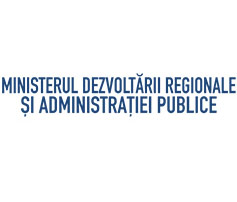 Pucioasa balneclimateric resort
Pucioasa balneclimateric resort
"Taking advantage of a beautiful location, in a valley opened on Ialomiţa river, having slightly long-winded hills on one side and another, on the background the view of the mountains covered by forests, from beyond the river, from under a strand rupture, the beneficial springs of sulphur and iron erupt." (Alexandru Vlahuţă, Picturesque Romania)
The first documented mention of the city dates from September 20th 1649, appearing as "Piatra Pucioasa". After 1828, it has developed as a balneclimateric resort, taking the name of Pucioasa, due to the concentrated sulphurous mineral waters, popularly called "pucioasă" (sulphur). Known as "Băile Pucioasa" (Pucioasa Baths) since 1928, the resort has been continuously developing, its waters being on the first place among the most well-known of the Europe, especially in the inter-war period.
The mineral waters from Pucioasa, which appear at the base of Măldăreasca hill slope, having therapeutic properties, lead to the appearance of the first settlements in the area, the inhabitants being called "ones from Pucioasa", where the name of Pucioasa locality appeared later. The sulphur and iodine springs were discovered in 1828, but scientific analyses were made only in 1870 by doctor Berdath Luedway Alfred.
Pucioasa resort is located at a distance of 21 km from Tragoviste Municipality and is situated in the triangle made by the cities of Bucharest-Braşov-Piteşti, at 100 km from each one.
The hill area climate, with an annual average temperature of over 10 degrees Celsius and with rainfalls of 750 mm annually, with soft winters and cool summers, clear days and fresh air, as well as the mineral waters make that the resort is recommended for the treatment of rheumatic, posttraumatic, neurological, peripheral and central, respiratory, dermatological and cardiovascular affections.
The most important gifts of Pucioasa are its rivers, Ialomiţa and Bizdidelul, which cross it from north to south and the mineral waters rich in sulphur and iodine.
Due to some unique cure factors, such as the sulphurous waters which have the highest concentration in the country, the resort developed its profile in the area of external cure in rheumatic, inflammatory, degenerative, abarticular affections, posttraumatic after-effects of hands and feet.
On the coat of arms of Pucioasa resort is written the Latin saying "medicus curat, natura sanat" (doctor treats, nature heals)
http://www.tbrcm.ro/statiunea-de-tratament-balnear-pucioasa.php










